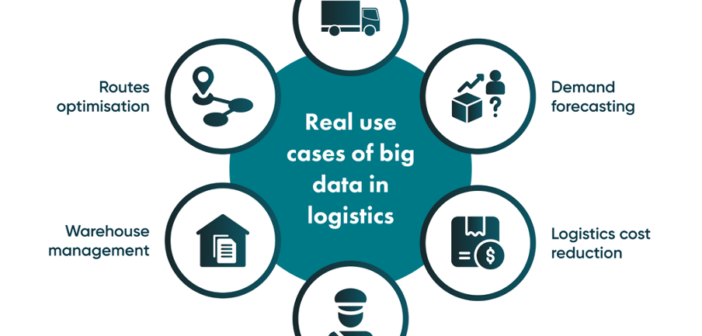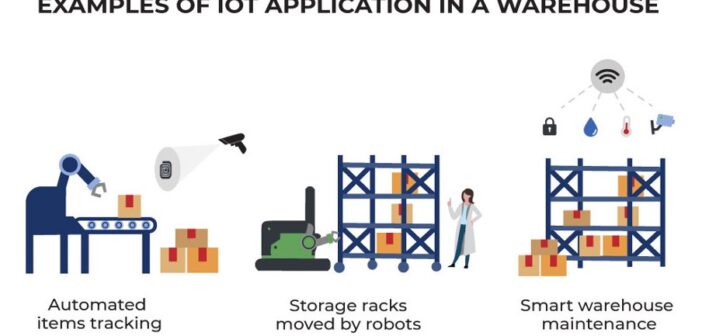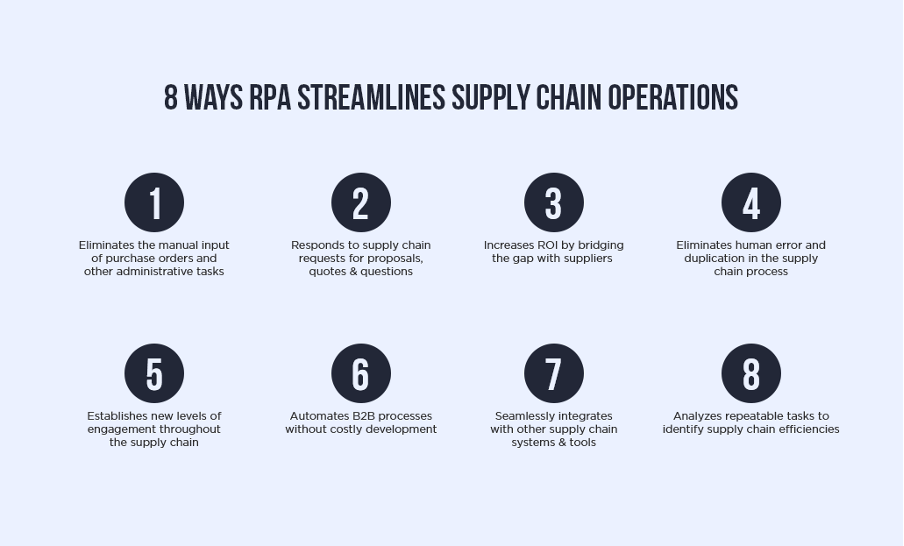The world of logistics digitalization is constantly changing, with new technologies and trends emerging all the time. As a result, it is essential for businesses operating in this industry to stay up-to-date with these developments and take advantage of new opportunities.
Importance of Staying Updated With Emerging Trends In Logistics
The trend that is currently shaping the digitalization in the logistics industry is the increasing use of automation and robotics. Businesses are now investing in technologies in order to boost their workflow. Businesses can cut labor costs, improve accuracy, and accelerate delivery times by automating routine tasks. However, in order to take advantage of these technological advancements, companies must first invest in the necessary equipment and training for their staff.
Another trend that is rapidly gaining traction in logistics digitalization is big data analytics. By collecting and analyzing large amounts of data about customer behavior, you can gain valuable insights that enable them for more informed decisions. For example, data analytics help to identify new market opportunities and improve engagement. In order to profit from these benefits, businesses must have access to technology and expertise to collect data effectively.
Continuing the list of digital transformation in logistics tips and trends, businesses need to be able to adjust to customers’ shifting demands and provide the demanded services in order to stay competitive.
Blockchain Technology for Supply Chain Transparency
Blockchain technology provides for decentralized and tamperproof data on all transactions between different intermediaries within the supply chain. All the participating entities shall keep such records so that they can check whether any transaction was genuine and true.
Furthermore, Blockchain technology helps track products and items through each stage. Such traceability is important because it allows manufacturers to verify that the products are in line with legal requirements and comply with industry standards.
In addition, Blockchain technology digitalization in the logistics industry can also help businesses identify inefficiencies in the supply chain, improving its overall performance. In order to maintain a competitive position on the international market, it can lead to substantial cost savings and aid companies.
Implementing smart contracts is another way to improve supply chain transparency. Smart contracts take effect when certain predetermined conditions are met. For instance, a smart contract could be set up to automatically pay suppliers as soon as goods are received, eliminating the need for manual invoicing and payment processing.
Real-world examples showcasing the impact of blockchain within the industry
The first is Maersk’S TradeLens, a global trade platform based on blockchain which allows multiple parties, such as shippers, ports and shipping companies, to share their data in real time. The platform will give stakeholders full visibility of the supply chain, making it possible to monitor consignments and manage their operations more effectively. By leveraging blockchain technology’s power, the platform has reduced the time required to process customs documentation from days to hours.
Another illustration is the blockchain platform developed by UPS Supply Chain Solutions. Suppliers will be able to submit data on the products they are sending and every other supplier within the supply chain will watch their progress in real time using this platform. The complete visibility of the supply chain, which helps reduce waste and the likelihood of lost or stolen goods, is also provided by the UPS platform.
IoT in Smart Warehousing
Smart warehousing is the practice of using IoT in digitalization in logistics industry to create a warehouse environment that is automated, connected and efficient. To achieve this, sensors, devices and other Internet of Things technologies will allow the collection of actual time data on inventory and operations in a warehouse. Warehouse operators can take good informed decisions that will improve inventory control and warehouse operations, with the aid of this information.
Increased efficiency is one of the biggest advantages of IoT in smart warehousing. Warehouse managers can track the movement of goods in real-time by using IoT, devices, and sensors. They are able to track not only individual items but also the movement of entire stockpiles. By doing this, they can guarantee that merchandise is delivered to the appropriate store locations, cutting down on the time needed to find and deliver merchandise.
IoT, devices and sensors can also facilitate predictive maintenance schedules. They can help in predicting when equipment is due for maintenance allowing for scheduled maintenance rather than emergency maintenance which can cause costly downtime.
AI in Predictive Analytics
The application of AI and predictive analytics in demand forecasting can help businesses anticipate customers’ demands and adjust their production and inventory management accordingly. This prevents overproduction or underproduction, both of which can lead to significant financial losses. For example, Walmart uses predictive analytics to forecast sales for individual stores, allowing them to restock products at the right time, reducing waste, and improving product availability.
Furthermore, optimizing logistics planning is another area where AI and predictive analytics can be applied. The management of the movement of goods from source to destination in an efficient manner is part of logistics planning. Businesses may be able to identify the most efficient routes, modes of transport and even optimum times for delivery through predictive analytics. Moreover, they can help provide real time data on shipments to allow businesses to make adjustments quickly if there are any delays or problems.
Leveraging AI in demand forecasting and logistics digitalization are not limited to cost savings and efficiency improvements. These technologies also help businesses to stay ahead of their competition by providing them with valuable insights.
Additionally, AI helps businesses to mitigate risk by enabling them to anticipate potential issues in advance. Airlines use predictive analytics to manage their maintenance schedules proactively, preventing costly downtime that impacts their operations.
Case studies highlighting the use of AI for improved global trade outcomes
One of the companies that have successfully incorporated AI in logistics management is UPS. UPS uses a system called ORION (On-Road Integrated Optimization Navigation), which uses AI algorithms to optimize package delivery routes in real-time. UPS has benefited from ORION’s assistance in reducing the number of miles driven, saving money on fuel, and improving the general effectiveness of its delivery operations. The system determines the most effective delivery routes by considering a wide range of variables, including traffic, weather, and package weight. As a result, UPS has been able to reduce the total miles driven by its vehicles by 100 million miles annually, leading to significant environmental benefits.
Another company that has leveraged AI digital transformation in logistics industry is Maersk. Maersk is a global shipping company that uses AI algorithms to optimize its shipping routes and schedules. The company’s system analyzes factors such as port congestion, shipping volumes, and vessel speeds to calculate the most efficient routes.
Robotic Process Automation (RPA) in Supply Chain Operations
One area where RPA has particular potential for disruption is the digitalization in supply chain management and logistics. These are notoriously complex, with a bunch of interconnected processes and numerous repetitive tasks that can be time-consuming and labor-intensive. However, by leveraging RPA, businesses can enhance operational efficiency.
Process automation could be significantly improved by integrating RPA. RPA is the use of software to automate routine, repetitive tasks that were previously completed by humans. Businesses can increase their operational effectiveness, lower operational costs, and improve the precision of their supply chain data by integrating the RPA logistics digital transformation trend into their supply chain.
In order to reduce errors and redundancies in operations, RPA helps to streamline supply chain processes. For example, RPA can be programmed by companies to automatically track the level of inventories, order supplies or even predict market demand. Companies can greatly reduce the probability of human error and shorten their response times by automating these processes. This automated data processing can enable us to make quicker decisions and ultimately serve the company’s bottom line.
Conclusion
Overall, in logistics digital transformation time it is essential to remain competitive and take advantage of new opportunities. By investing in the necessary infrastructure, technology, and expertise, following digital transformation in logistics tips and trends businesses can streamline their operations.
To achieve a successful digital transformation in a logistics business, partnering with a competent logistics consulting company is crucial. Thinking wisely, you can make an informed decision and find a trusted vendor with proven expertise, a track record of success, a reputable brand, and create a cost-effective and personally tailored solution.









